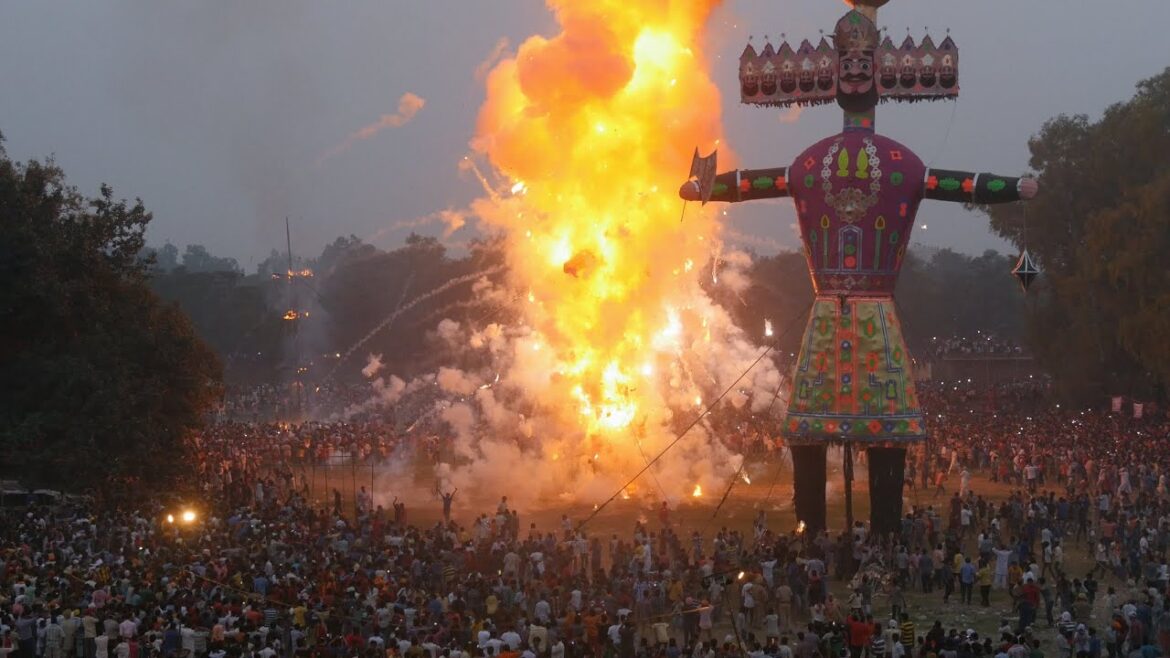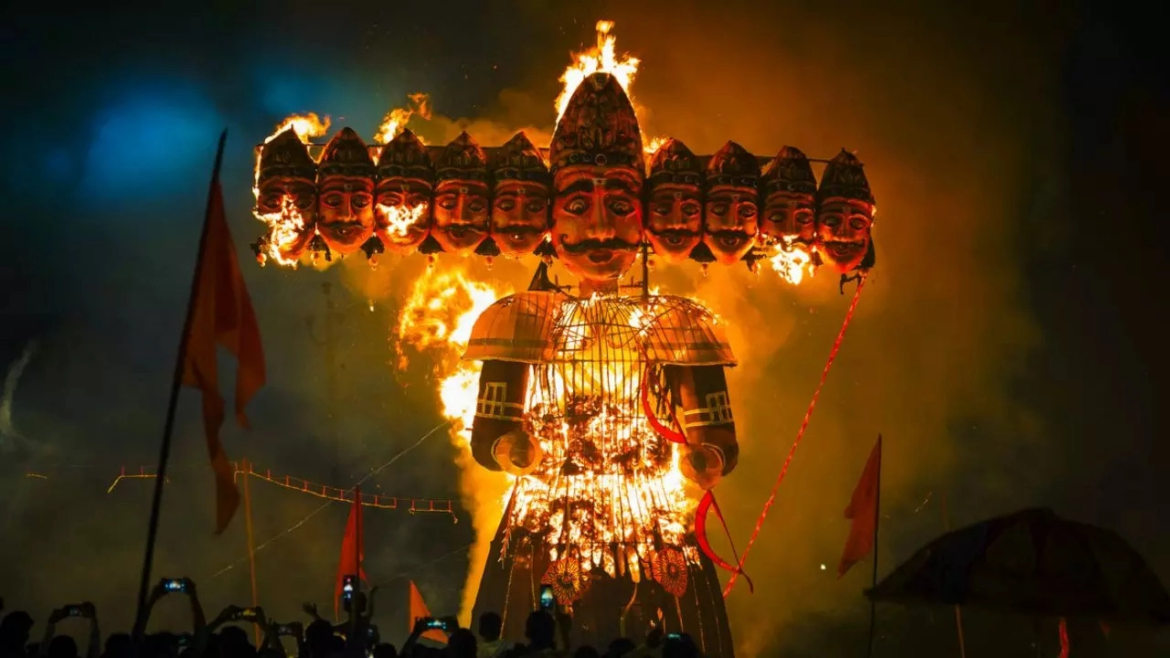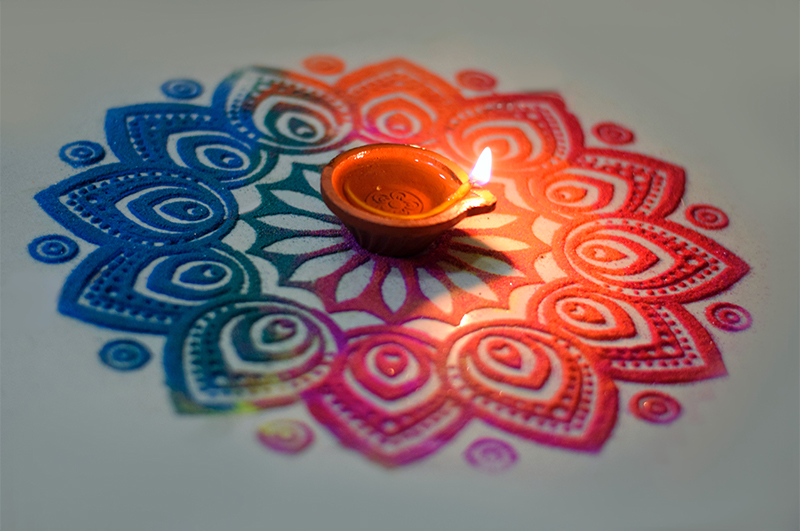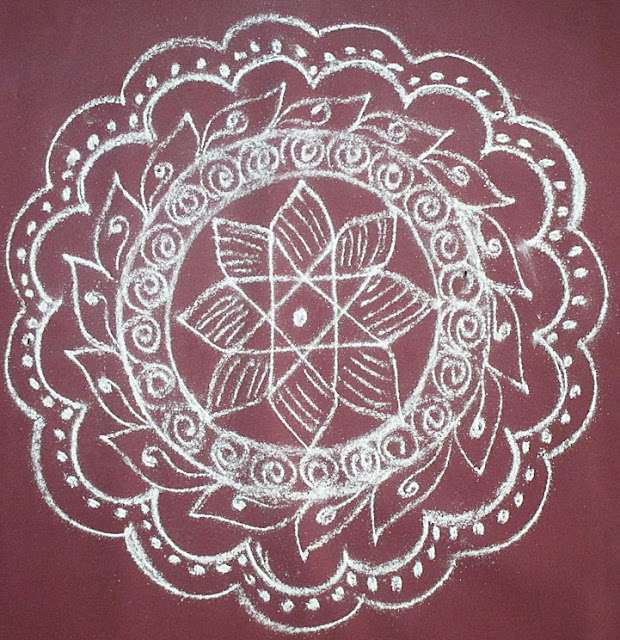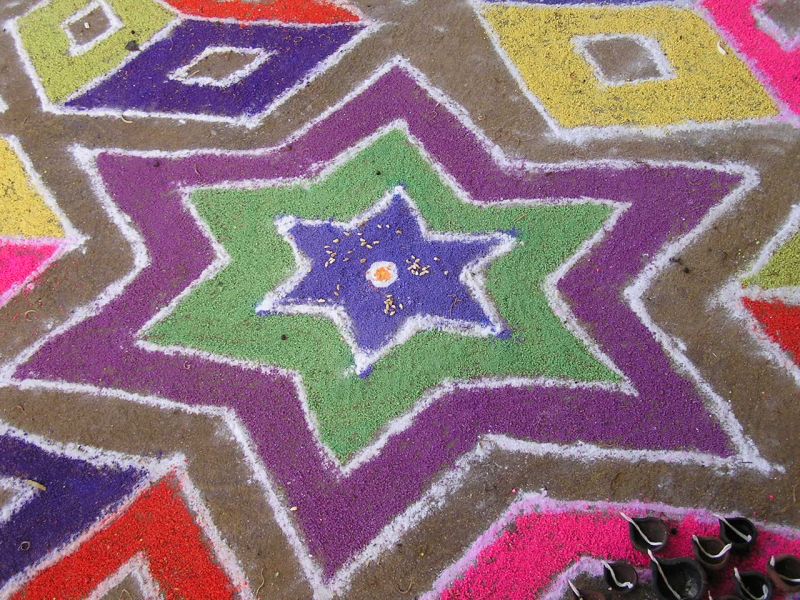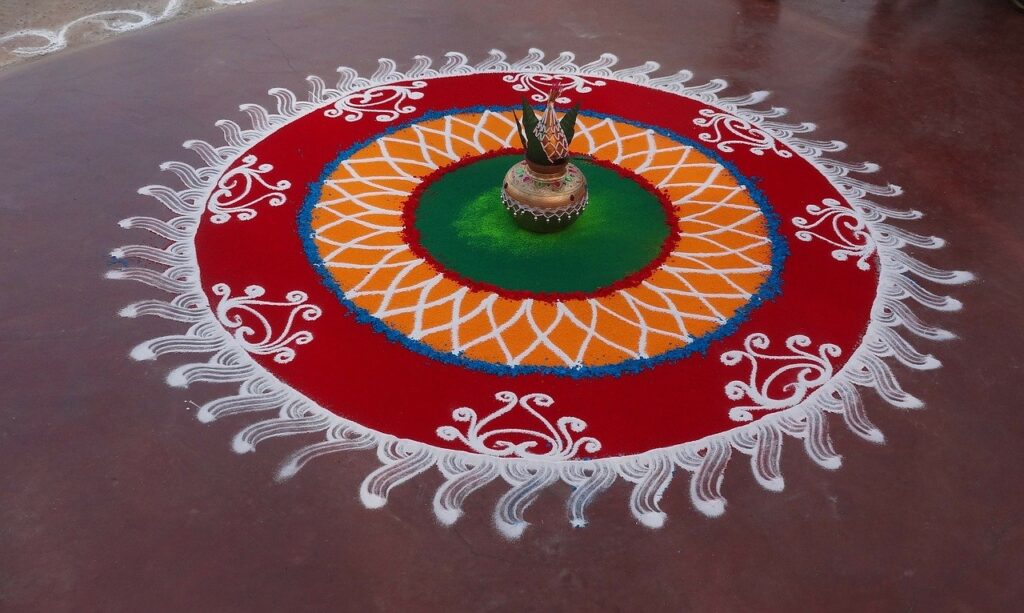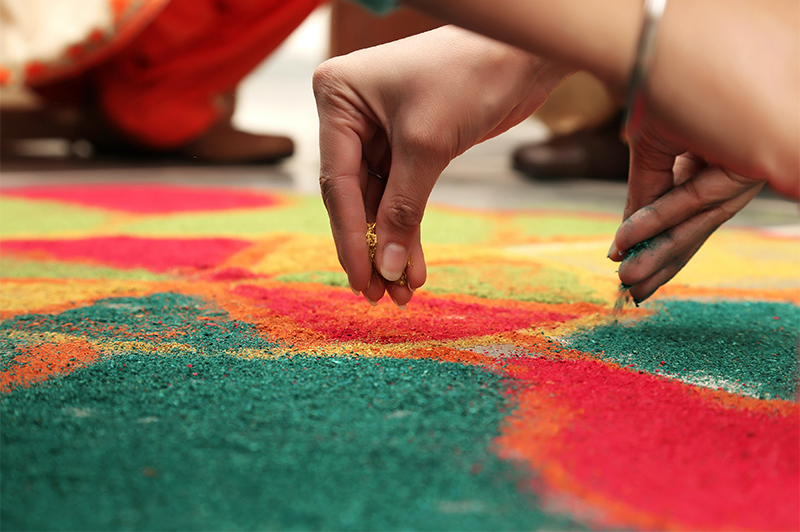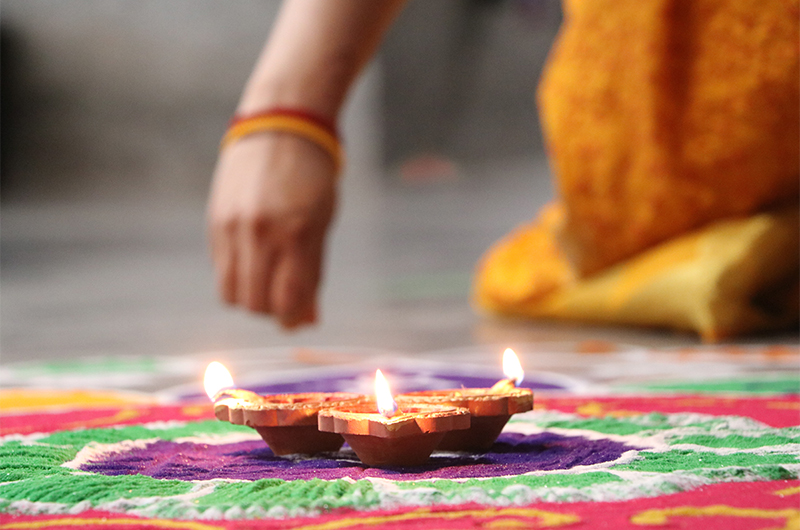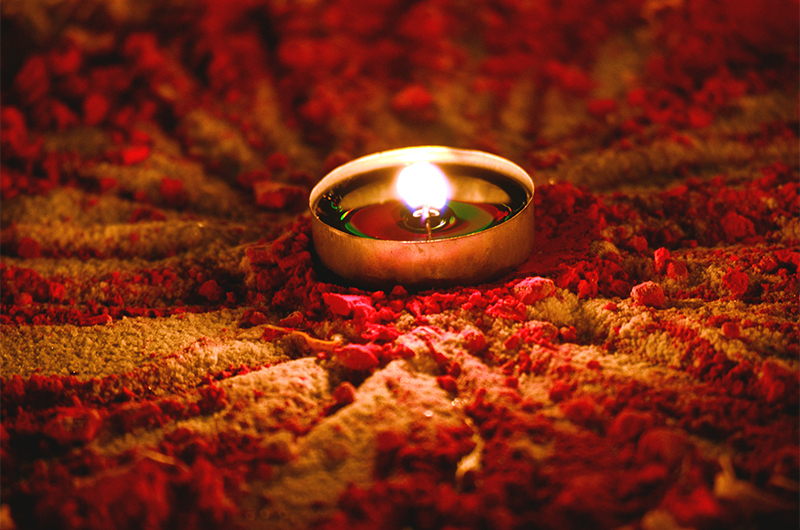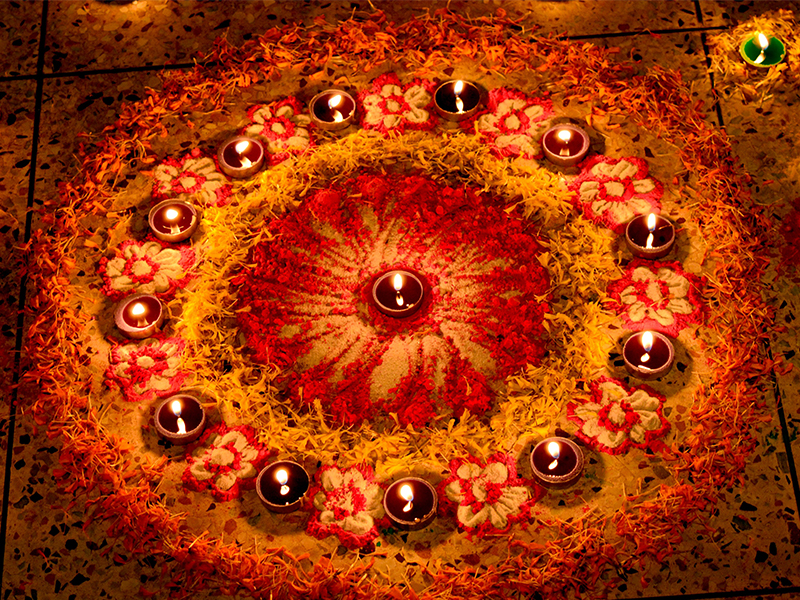By परिका सिंह
जैसे-जैसे रामचरितमानस की महाकाव्य कथा अपने चरमोत्कर्ष पर पहुँचती गई, भगवान राम ने रावण से युद्ध जीता और अपनी अपहृत पत्नी को लंका के राजा से छुड़ाया। यह दिन प्रतीकात्मक रूप से बुराई पर अच्छाई की जीत बन गया। प्रतीकात्मक रूप से।
दुर्भाग्य से, दशहरा अब हमारे समाज में अच्छाई या बुराई या हमारे मन और दिल में अच्छाई या बुराई को दर्शाने का दिन नहीं रह गया है। किसी तरह, यह सबसे ऊँचा पुतला खड़ा करने की एक खुली प्रतियोगिता बन गया है – कथित तौर पर इस साल दिल्ली ने यह उपलब्धि हासिल की है।
बड़े होते हुए, दुर्गा पूजा के अगले दिन हर छोटे बच्चे में दशहरे की छुट्टी के लिए उत्साह भर जाता था। भले ही दिन भर स्कूल का अवकाश होता था और तरह-तरह के व्यंजन बने होते थे, मैं शस्त्र पूजा के बाद शाम का बेसब्री से इंतज़ार करती थी जब मेरे पिता हमें पास के दशहरा मैदान में ले जाते थे जहाँ आधा शहर एक उत्सव देखने के लिए एकत्रित होता था। एक बेहतरीन दृश्य बिंदु की खोज में वे कार को सटीक दृष्टि वाली जगह पर रोकने की कोशिश करते थे और हमें कार के ऊपर बैठा देते थे ताकि हम पुतले के आसपास की रोशनी और रंग देख सकें।
मुझे याद है कि उत्सव और जश्न के माहौल में मैं मंत्रमुग्ध हो जाती थी, क्योंकि मैदान गुब्बारे, खिलौने और राम, सीता और रावण की छोटी मूर्तियाँ बेचने वाले साइकिल विक्रेताओं से भरा होता था। जैसे ही पुतला जलाया जाता था, मेरे पिताजी सोना पत्ती बाँटते थे ताकि हम उनके साथ रास्ते में मिलने वाले किसी भी व्यक्ति को शुभकामनाएँ दे सकें। मिट्टी से बने छोटे-छोटे पुतलों को कई घरों में सजाया जाता था और हमारी कॉलोनी के लोग एक-दूसरे के घर जाकर समुदाय और एकजुटता की भावना को बढ़ावा देते थे और दिन का समापन करते थे। काश मैं इतने सालों बाद भी बचपन के आश्चर्य और उत्सव के उन पलों को संजोकर रख पाती।
आज इंदौर के दशहरा मैदान में 111 फीट ऊंचा एक विशाल पुतला बनाया गया है। देश का सबसे साफ-सुथरा शहर, जिसने हाल ही में दो सैन्य अधिकारियों पर क्रूर हमला और उनकी मित्र के साथ सामूहिक बलात्कार की घटना देखी। हरियाणा ने कृषि में फसल कटाई के मौसम का जश्न मनाने के लिए 125 फीट का रावण बनाकर इसे पीछे छोड़ दिया, जबकि लाखों किसान अभी भी उनकी फसल की सही कीमतों के लिए विरोध कर रहे हैं। हालांकि, अंत में, दिल्ली ने द्वारका में 211 फीट के पुतले के साथ यह प्रतियोगिता जीत ली।
जहाँ दशहरा महिषासुर पर देवी दुर्गा की जीत का भी प्रतीक है, दिल्ली लगातार महिलाओं के खिलाफ अपराधों से जूझ रही है, और इसकी मुख्यमंत्री आतिशी मार्लेना को उनके आवास से बेदखल कर दिया गया है।
हालांकि इस पुतले पर चर्चा स्थानीय कलाकारों की प्रतिभा को प्रदर्शित करने के लिए लाभदायक है, लेकिन घरों के बाहर छोटे मिट्टी के पुतलों से लेकर राजधानी शहर में 211 फीट की इस प्रदर्शनी के बीच, यह सवाल करने का समय है कि क्या उन्हें जलाने मात्र से इस दिन का वास्तविक महत्व खत्म हो गया है। क्या आज रात वास्तव में अच्छाई की बुराई पर जीत हो जायेगी?
प्रधानमंत्री नरेन्द्र मोदी को इस कार्यक्रम के लिए आमंत्रित किया गया है और चाहे वह इसे स्वीकार करें या नहीं, आज रात 211 फीट ऊंचे रावण को जलाया जाएगा, ये नज़रंदाज़ करते हुए कि लद्दाख के 75 पुरुष, महिलाएं और बुजुर्ग लद्दाख भवन में भूख हड़ताल के सातवें दिन में झुलस रहे हैं। वे स्वशासन के अपने अधिकार की मांग कर रहे हैं और हमारे देश को जलवायु परिवर्तन के विनाशकारी प्रभावों के प्रति आगाह करना चाहते हैं।
वही रावण, जिसकी पूजा उत्तर प्रदेश के कानपुर और बिसरख, मध्य प्रदेश के मंदसौर, राजस्थान के जोधपुर, महाराष्ट्र के गढ़चिरौली आदि सहित भारत के कई हिस्सों में की जाती है। वास्तव में, हमारी समृद्ध संस्कृति और विरासत इतनी विविधतापूर्ण है कि यह संथाल, असुर, कोरकू और तुरुवा जैसे कई आदिवासी समुदायों के साथ पनपती है, जो महिषासुर के समर्पित अनुयायी हैं और अपनी भूमि और पर्यावरण के समर्पित संरक्षक हैं।
शायद यह दिन रावण या महिषासुर की मृत्यु से कहीं बड़ा है। शायद समुदायों का अपने धर्म, जाति या क्षेत्र की परवाह किए बिना एक साथ आना दशहरा की भावना के लिए कहीं अधिक आवश्यक है।
हर बार जब हम उस पर्यावरण की रक्षा करते हैं जो हमें सहारा देता है, उन उद्देश्यों का समर्थन करते हैं जो हमें ऊपर उठाते हैं, उन लोगों के प्रति दया और करुणा दिखाते हैं जिन्हें हमारी ज़रूरत है, और अपनी गलतियों, गलतफहमियों और पूर्वाग्रहों पर विचार करते हैं, तो हम सही मायने में राम और रावण, देवी और असुर, किसान और उद्योगपति, राजनेता और मतदाता को एक साथ लाते हैं – भारतीयों के रूप में, जिन्होंने अच्छाई को चुना, जिन्होंने बुराई पर विजय पाई और अब सोने की पत्तियों का आदान-प्रदान करने और दशहरा के सार को मनाने के हकदार हैं।
और गीतकार जावेद अख्तर की इस कविता से अधिक सुंदरता और उत्साह के साथ इसे व्यक्त नहीं किया जा सकता है,
“राम ही तो करुणा में हैं, शांति में राम हैं
राम ही हैं एकता में, प्रगति में राम हैं
राम बस भक्तों नहीं, शत्रु के भी चिंतन में हैं
देख तज के पाप रावण, राम तेरे मन में हैं
राम तेरे मन में हैं, राम मेरे मन में हैं
राम तो घर घर में हैं, राम हर आंगन में हैं
मन से रावण जो निकले, राम उसके मन में हैं…”
इन शब्दों के साथ, मैं आपको हार्दिक शुभकामनाएं देती हूँ। आपका दशहरा मंगलमय एवं विचारशील रहे|


